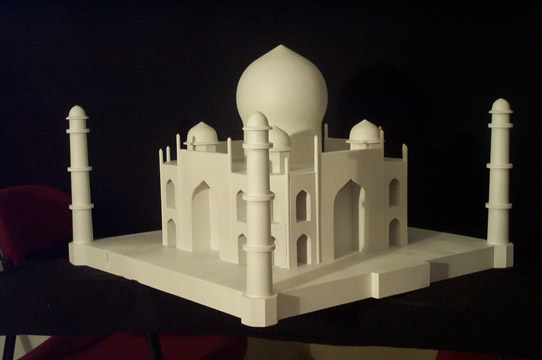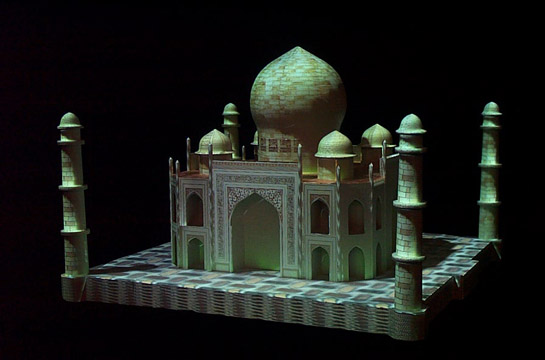ShaderLamps
|
|
|||
|
Main Idea We are used to looking at the output of a computer graphics program on a monitor or on a screen. But, how can we see the "special effects" directly in our environment ? For example, how can we make a clay vase sitting on a table look like it is made up of gold, with fine details ? The appearance of an object is a function of illumination, surface reflectance and viewer location. Hence, we can rearrange the factors along the optical path and reproduce the equivalent desired appearance. We have recently introduced a new paradigm and related techniques to graphically animate physical objects with projectors. Because the approach is to effectively "lift" the visual properties of the object into the projector, we call the projectors shader lamps. We address the central issue of complete illumination of non-trivial physical objects using multiple projectors and present a set of new techniques that make the process of illumination practical. We show some results and describe the new challenges in graphics, geometry, vision and user interfaces. |
||||
 |
 |
|||
|
FAQ What is the main idea ? What is required to achieve the Shader Lamps effects ? How are the projected images aligned with real objects ? Is this process cumbersome ? During the calibration stage, locations of projector pixels that illuminate important features on the physical object are collected. The calibration computes the pose of the projector with respect to the physical object. This one-time pre-processing stage involves the simple process of clicking with a mouse to collect pixel locations and takes less than one minute ! During the rendering stage, the 3D graphics model is rendered from the viewpoint of the projector. The rendered image when displayed appears correctly aligned with important features on the physical object. How are the images generated ? What type of objects can be illuminated ? How can you avoid self-shadows for complex objects (like the Taj Mahal model) ? How can you merge images from multiple projectors ? Can you illuminate objects that may be moving ? Can you make static objects appear as if they are moving ? At shaderlamps.com you can see more examples. |
||||